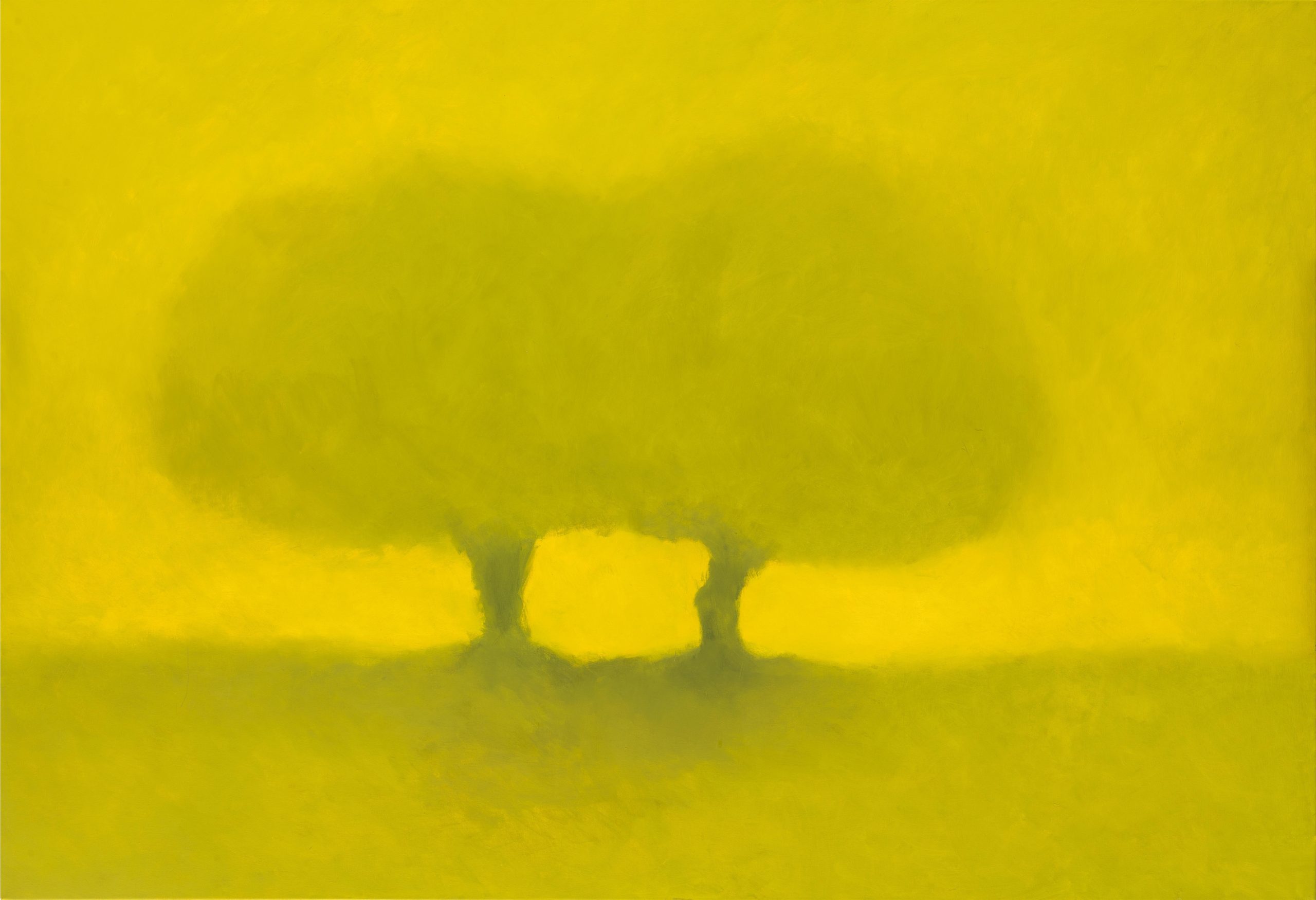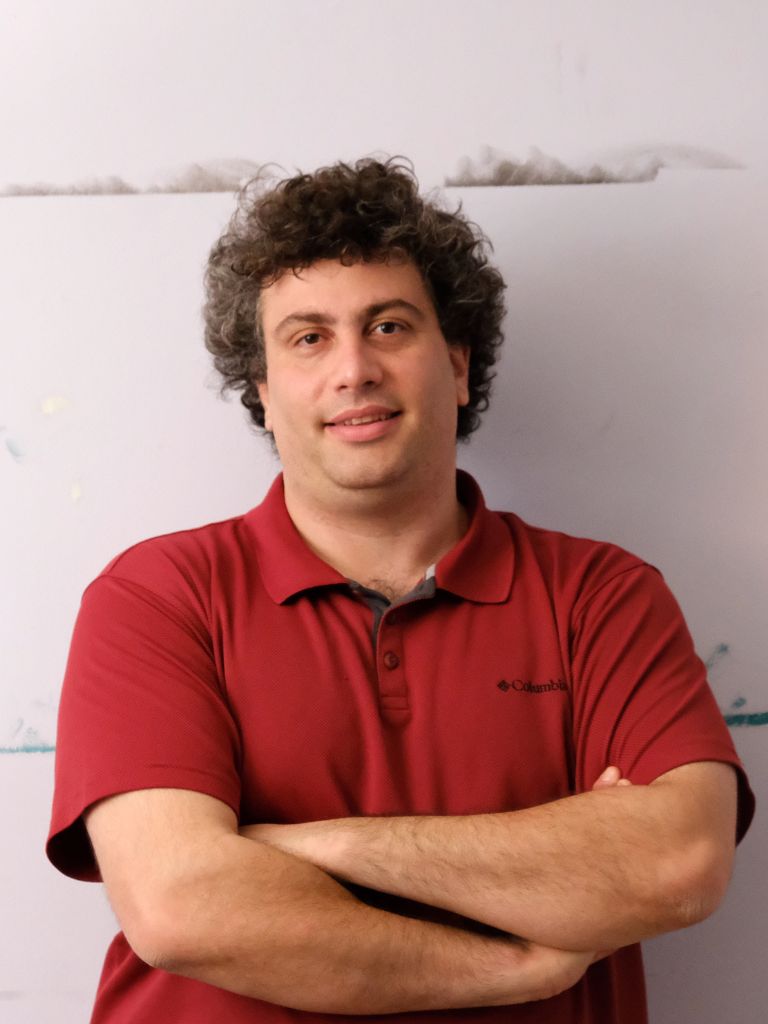Anastasis Ioannou
Mind Spaces
1 June – 2 July 2024
Opening: 1 June, 19h – 21h

About the project
La Boulangerie! is pleased to announce its summer exhibition, opening on the 1st of June. On show will be ‘Mind Spaces’, a series of psychological portraits of imaginary tree landscapes, a subject that the artist Anastatis Ioannou has been fervently studying and developing for the past three years.
So much has been said throughout the history of art on the poignant character of Nature, of the resilience of it, of the lament of its absence, of its endless expression and of the interconnectedness with the civilised construct of the human race. The beauty, aesthetic and emotional, of any landscape -from lush to barren- has been central to so many movements and has been focal to artistic expression universally and across time.
For Ioannou, the inner dialogue kicked off when he experienced ‘Waiting for the Sibyl’ by William Kentridge:
Let them think I m a tree
or a shadow of a tree
a doubt
a shadow of a doubt.
The appeal of his brushstroke and colour palette is instant; the depictions are entirely fictional and not situational, pulling the viewer into a process of exploration of feelings. Purposefully all works remain untitled as to underline the importance of loss of orientation and guidance. However, there are some reference points to embark from: Ioannou who has read quantum physics, bets on the duality which integral to the quantum mechanics concept, whereby light, and particles in general, have a dual nature- they can exhibit characteristics of both particles and waves.
In his tree portraitscapes, light and matter are very present in a diffusing vocabulary, almost like the element of water: are we looking at a reflection, a dystopia, a state of the mind or a slice of hope emerging?
Anastasis Ioannou
Mind Spaces
1 June – 2 July 2024
Opening: 1 June, 19h – 21h

About the project
La Boulangerie! is pleased to announce its summer exhibition, opening on the 1st of June. On show will be ‘Mind Spaces’, a series of psychological portraits of imaginary tree landscapes, a subject that the artist Anastatis Ioannou has been fervently studying and developing for the past three years.
So much has been said throughout the history of art on the poignant character of Nature, of the resilience of it, of the lament of its absence, of its endless expression and of the interconnectedness with the civilised construct of the human race. The beauty, aesthetic and emotional, of any landscape -from lush to barren- has been central to so many movements and has been focal to artistic expression universally and across time.
For Ioannou, the inner dialogue kicked off when he experienced ‘Waiting for the Sibyl’ by William Kentridge:
Let them think I m a tree
or a shadow of a tree
a doubt
a shadow of a doubt.
The appeal of his brushstroke and colour palette is instant; the depictions are entirely fictional and not situational, pulling the viewer into a process of exploration of feelings. Purposefully all works remain untitled as to underline the importance of loss of orientation and guidance. However, there are some reference points to embark from: Ioannou who has read quantum physics, bets on the duality which integral to the quantum mechanics concept, whereby light, and particles in general, have a dual nature- they can exhibit characteristics of both particles and waves.
In his tree portraitscapes, light and matter are very present in a diffusing vocabulary, almost like the element of water: are we looking at a reflection, a dystopia, a state of the mind or a slice of hope emerging?
Available works
Untitled, 2023
oil on canvas
160 x 110cm
Untitled, 2023
oil on canvas
70 x 50 cm
Untitled, 2023
oil on canvas
70 x 50 cm
Untitled, 2024
oil on canvas
90 x 22 cm
Untitled, 2023
oil on canvas
110 x 70cm
Untitled, 2024
oil on canvas
45 x 25 cm
Untitled, 2024
oil on canvas
110 x 160 cm
Untitled, 2024
oil on canvas
180 x 140cm
Untitled, 2024
oil on canvas
110 x 160 cm
Untitled, 2024
oil on canvas
180 x 140 cm
About Anastasis Ioannou
Anastasis Ioannou (b. 1990 in Athens) is an emerging artist from Greece. He has studied at the Athens School of Fine Arts and since his graduation in 2020 he has had three solo exhibitions in Greece and participated at a plethora of group exhibitions within the country. ‘Mind Spaces’ at La Boulangerie! is Ioannou’s first international exhibition.
Download full cv here.

Exclusive interview
La Boulangerie! in conversation with
Anastasis Ioannou
Anastasis, you have been dedicating the past three years painting your now signature style of tree portraits, but we get the feeling the paintings are much more about trees. Want to tell us more?
I express my inner psychological space through these images, which indeed resemble trees. The tree is more of a motive. A manner of organizing the painting field, the light. My inner explorations gave birth to the first trees. I could call them also self-portraits. I use the concept of portrait in an expanded way as portraits of the psyche, not in a traditional way. After looking inside me, the immediate consequence is to search for an external stimulus. I never observe a tree to make a painting. I’m more likely to look at a person on a bench and run to the studio. The apparent absence of human figure in this series of my works does not mean a lack of the human element. On the contrary, I would characterize my images as purely anthropocentric.
Your landscapes are imaginary, familiar in feeling but also completely unknown in location, more like moodscapes. Is there a predominant mood under which you paint?
I would say that moodscapes is a good word for the description of what I do. I communicate deeply, listen and empathize with people around me. The mood of others, a friend or stranger, affects me deeply. The joy, sadness, the struggle in people s lives becomes a part of me. I carry these feelings into the studio, where they are transformed into creative energy and artwork. So, to answer the question, there is no predominant mood. The disposition is purely random and depends directly on the interaction with my social environment. In that way a collective mood is activated, rather than an individual one.
My relationship with science taught me that in a problem there is right and wrong. This is a hard truth that has given me courage and answers in my artistic activity.
Let’s talk about order and chaos. The compositions are quite very orderly and one could argue two-dimensional but speak of a rich spectrum of emotions, may they be calm or upset but there is an emotional range to your work that seems to make an instant liaison with the viewer. What is your intention behind the methodical arrangement of your tree-figures?
Haha, I’m glad to hear that something of mine is organized! Indeed, at first glance, the composition seems stable. However, I would like to put more emphasis on the subtle colour variations. That’s where the chaos lies. In the backlit scene I create, as I work with the colours, I start to minimize the three-dimensional elements and approach something two-dimensional without ever fully reaching it. This is the exact limit, the liminal space that creates a mental vibration for me. Therefore, in the darkness, the fog, and the dream, I aim to create an existential shock, an experience beyond everyday life that brings us closer to the essence of each other.
About Anastasis Ioannou
Anastasis Ioannou (b. 1990 in Athens) is an emerging artist from Greece. He has studied at the Athens School of Fine Arts and since his graduation in 2020 he has had three solo exhibitions in Greece and participated at a plethora of group exhibitions within the country. ‘Mind Spaces’ at La Boulangerie! is Ioannou’s first international exhibition.
Download full cv here.

Exclusive interview
La Boulangerie! in conversation with Anastasis Ioannou
Anastasis, you have been dedicating the past three years painting your now signature style of tree portraits, but we get the feeling the paintings are much more about trees. Want to tell us more?
I express my inner psychological space through these images, which indeed resemble trees. The tree is more of a motive. A manner of organizing the painting field, the light. My inner explorations gave birth to the first trees. I could call them also self-portraits. I use the concept of portrait in an expanded way as portraits of the psyche, not in a traditional way. After looking inside me, the immediate consequence is to search for an external stimulus. I never observe a tree to make a painting. I’m more likely to look at a person on a bench and run to the studio. The apparent absence of human figure in this series of my works does not mean a lack of the human element. On the contrary, I would characterize my images as purely anthropocentric.
Your landscapes are imaginary, familiar in feeling but also completely unknown in location, more like moodscapes. Is there a predominant mood under which you paint?
I would say that moodscapes is a good word for the description of what I do. I communicate deeply, listen and empathize with people around me. The mood of others, a friend or stranger, affects me deeply. The joy, sadness, the struggle in people s lives becomes a part of me. I carry these feelings into the studio, where they are transformed into creative energy and artwork. So, to answer the question, there is no predominant mood. The disposition is purely random and depends directly on the interaction with my social environment. In that way a collective mood is activated, rather than an individual one.
My relationship with science taught me that in a problem there is right and wrong. This is a hard truth that has given me courage and answers in my artistic activity.
Let’s talk about order and chaos. The compositions are quite very orderly and one could argue two-dimensional but speak of a rich spectrum of emotions, may they be calm or upset but there is an emotional range to your work that seems to make an instant liaison with the viewer. What is your intention behind the methodical arrangement of your tree-figures?
Haha, I’m glad to hear that something of mine is organized! Indeed, at first glance, the composition seems stable. However, I would like to put more emphasis on the subtle colour variations. That’s where the chaos lies. In the backlit scene I create, as I work with the colours, I start to minimize the three-dimensional elements and approach something two-dimensional without ever fully reaching it. This is the exact limit, the liminal space that creates a mental vibration for me. Therefore, in the darkness, the fog, and the dream, I aim to create an existential shock, an experience beyond everyday life that brings us closer to the essence of each other.










